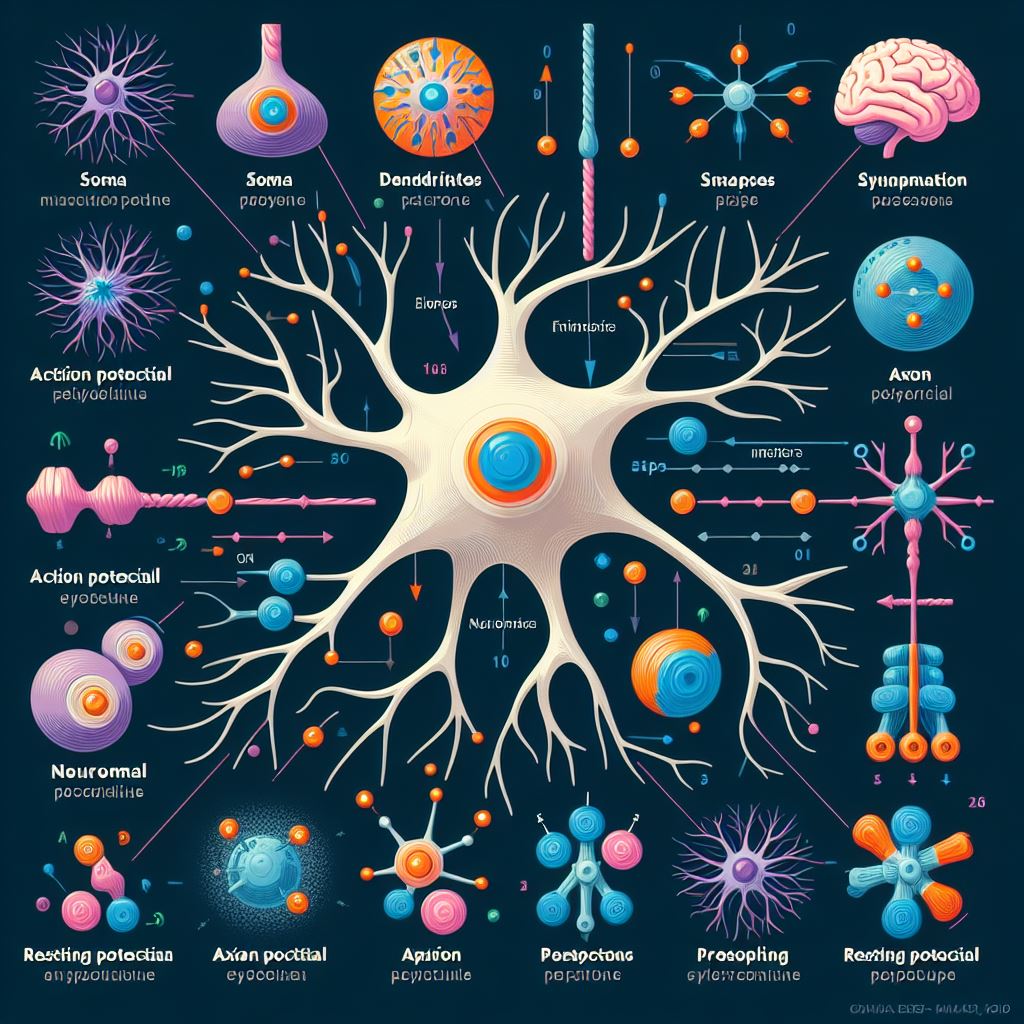From Neurons to Behavior: Summation and Synaptic Potentials
Neuronal Conversations: A Symphony of Summation
In the intricate landscape of neuroscience, the concepts of summation and synaptic potentials orchestrate the communication between neurons. Let’s delve into this neural symphony, where electrical signals and synaptic interactions shape the foundation of our thoughts and actions.

Summation: The Art of Neural Integration
Spatial Summation: A Gathering of Signals
Spatial summation occurs when multiple synaptic inputs, originating from different locations on a neuron’s dendritic tree, converge. The summation of these signals determines whether the neuron will fire an action potential. It’s akin to a neural vote, with various inputs contributing to the decision-making process.
Temporal Summation: Timing is Everything
Temporal summation involves the cumulative effect of closely spaced synaptic inputs over time. If the frequency and timing of these inputs align, they can reach the threshold for action potential initiation. It’s a delicate dance where the timing of signals influences the neuron’s response.
Synaptic Potentials: The Language of Neuronal Communication
Excitatory Postsynaptic Potentials (EPSPs): Sparking Action
EPSPs result from excitatory neurotransmitters binding to receptors on the postsynaptic neuron, making the membrane potential more positive. These depolarizing events bring the neuron closer to the threshold for firing an action potential, amplifying the likelihood of a neural response.
Inhibitory Postsynaptic Potentials (IPSPs): Putting on the Brakes
Conversely, IPSPs result from inhibitory neurotransmitters binding to receptors, making the postsynaptic membrane more negative. This hyperpolarizing effect moves the neuron away from the action potential threshold, acting as a neural brake and reducing the likelihood of firing.
Harmony in Neural Communication: Summation and Synaptic Potentials
As neurons engage in their intricate conversations, summation and synaptic potentials serve as the language that dictates the flow of information. The delicate balance between excitatory and inhibitory signals, coupled with the spatial and temporal integration of inputs, shapes the neural symphony.
Conclusion: The Dance of Neurons in the Mind’s Orchestra
In the mesmerizing world of neuroscience, summation and synaptic potentials emerge as fundamental players in the neural orchestra. The ebb and flow of electrical signals, the delicate interplay of excitatory and inhibitory forces, all contribute to the symphony of thoughts, emotions, and actions that define our cognitive experience. As we unravel the complexities of neuronal communication, we gain a deeper appreciation for the intricacies that make our minds the extraordinary entities they are.


